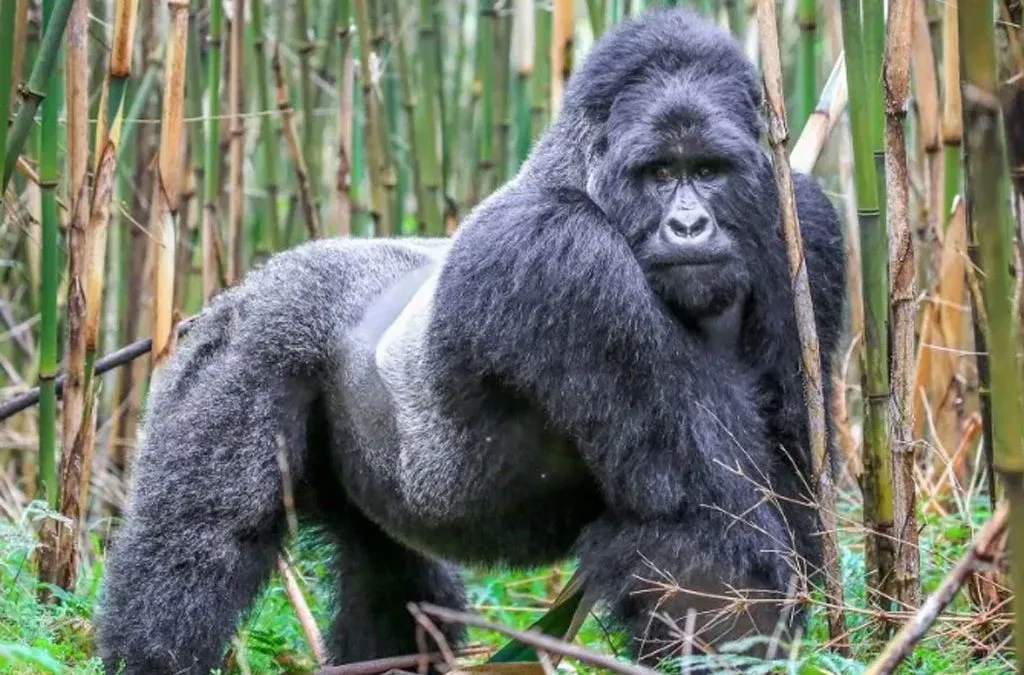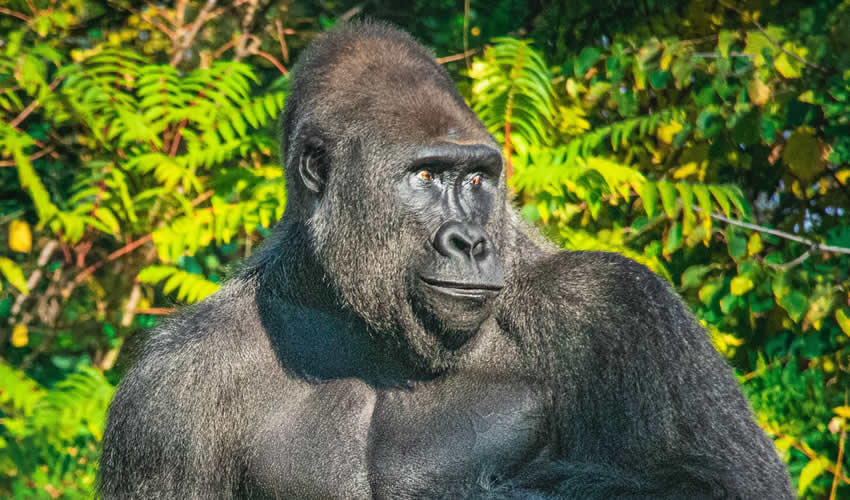Silverback Gorilla Trekking in Volcanoes
Into the Mist of Giants
Deep in the volcanic highlands of Rwanda, where rolling slopes rise into mist-draped peaks and forests echo with the whispers of ancient life, there exists one of the most extraordinary encounters on earth. It is here, in the emerald embrace of Volcanoes National Park, that the magnificent silverback gorilla reigns supreme. To embark on a journey through these forests is not merely to observe wildlife but to enter a living story of strength, survival, and profound connection.
The silverback gorilla, a creature whose sheer presence commands both respect and awe, stands as guardian and leader of his family. He embodies resilience yet radiates gentleness, reminding humankind of the balance between authority and care. For those who seek to immerse themselves in the most profound expression of wilderness, silverback gorilla trekking in Volcanoes offers an experience that transcends ordinary travel. It is an encounter where the heart beats in rhythm with the forest and where the human spirit rediscovers its kinship with nature.
The Setting: Volcanoes National Park, Rwanda’s Sacred Highlands
Nestled in the northwestern corner of Rwanda, Volcanoes National Park forms part of the greater Virunga Conservation Area, a transboundary ecosystem shared with Uganda and the Democratic Republic of Congo. Spanning 160 square kilometers, the park is dominated by five colossal volcanoes: Karisimbi, Bisoke, Sabyinyo, Gahinga, and Muhabura. Their slopes, blanketed in bamboo forests, Hagenia woodlands, and alpine meadows, provide the sanctuary where the endangered mountain gorilla thrives.
Established in 1925 as Africa’s very first national park, Volcanoes has long been a global symbol of conservation. It gained international recognition through the pioneering work of Dian Fossey, whose groundbreaking research on gorillas transformed both scientific understanding and public awareness. Through her dedication, the plight of the mountain gorilla was brought to the world’s attention, inspiring decades of protective measures that continue to safeguard their future.
The park is not only a refuge for gorillas but also a reservoir of biodiversity. Golden monkeys leap among the bamboo, forest elephants move silently through the trees, and over two hundred bird species fill the skies with color and song. Yet despite this richness, it is the gorilla that reigns as the undisputed icon of Volcanoes, drawing travelers from across the globe into the heart of its misty forests.
The Silverback: Guardian of the Highlands
The central figure of the gorilla family, the silverback, commands an authority that is unmistakable. As a male gorilla matures, the fur on his back gradually turns a striking silver, symbolizing the transition from youth into leadership. With this change comes responsibility, for the silverback assumes the role of protector, decision-maker, and guide for his troop.
The silverback’s physical presence is both commanding and graceful. He may weigh up to 200 kilograms, his immense strength capable of bending bamboo with ease. Yet his dominance is not defined solely by power. It is expressed through guardianship, patience, and wisdom. He leads his family to feeding grounds, mediates disputes, and shields them from danger. His authority is rooted not in fear but in trust, for his troop follows him because he has proven himself capable of care as much as of command.
For those who trek into Volcanoes National Park, the encounter with a silverback is the pinnacle of the journey. To stand within meters of this magnificent creature is to experience a connection that words scarcely convey. His deep, contemplative gaze reflects not only intelligence but also a quiet recognition, a moment where human and gorilla acknowledge one another in silent understanding.
Preparing for the Journey: Permits, Briefings, and Readiness
The privilege of silverback gorilla trekking is carefully regulated to ensure both the safety of the gorillas and the quality of the visitor experience. Access is granted only through trekking permits issued by the Rwanda Development Board. These permits are limited in number, reflecting a strict policy of conservation that prioritizes the welfare of the gorillas above mass tourism.
The day of the trek begins at the park headquarters in Kinigi. Visitors gather in the early morning, the air filled with anticipation. Before the journey commences, detailed briefings are given by experienced guides. These instructions emphasize the principles of respect and responsibility: maintaining a safe distance, limiting interaction to one hour, and observing gorillas without interference. The guidelines are not restrictions but expressions of care, protecting the gorillas from stress and disease while ensuring that the encounter remains ethical and sustainable.
The trek itself requires physical readiness. The trails are carved into volcanic slopes, often steep, slippery, and cloaked in dense vegetation. Rainfall can transform paths into muddy rivers, while altitude adds a further challenge for those unaccustomed to thinner air. Porters, drawn from local communities, play an essential role in assisting visitors, carrying equipment and providing support. Their presence symbolizes the vital link between conservation and livelihoods, demonstrating how gorilla tourism uplifts surrounding communities.
Mental preparation is equally important. The journey is unpredictable, for gorillas roam freely through their habitat. A family may be located within an hour’s walk, or it may take six hours of trekking through demanding terrain before they are found. Patience becomes a virtue, reminding trekkers that this is not a performance but a genuine encounter with wild creatures in their domain.
The Trekking Experience: Meeting the Silverback in the Wild
As the trek progresses, the forest envelops visitors in its living embrace. The air grows heavy with the fragrance of wet earth and fresh bamboo, while birds and insects weave a constant background chorus. Guides read the signs of the forest with practiced eyes: chewed bamboo stalks, nests woven from leaves, and fresh dung signal the proximity of gorillas.
Then, at last, the moment arrives. Through the foliage, a gorilla family emerges, each member absorbed in its natural rhythms. Mothers cradle infants tenderly against their chests, juveniles engage in playful chases, and adolescents test their strength through mock battles. Amid this vibrant activity sits the silverback, his massive frame radiating calm authority.
The one hour of observation becomes a mosaic of unforgettable impressions. A silverback may rise to his full height, chest beating in a resonant display of strength that echoes through the trees. A curious juvenile may venture near, only to be gently redirected by the watchful gaze of the leader. Every action, whether subtle or dramatic, becomes a testament to the harmony of gorilla society and the profound wisdom of its leader.
The silence shared in these moments is profound. Cameras may capture images, but no technology can truly encapsulate the intensity of the encounter. It is not a spectacle but a communion, a fleeting hour where the boundary between species dissolves and a sense of kinship emerges.
The Challenges of the Trail: Testing Strength and Spirit
Silverback gorilla trekking in Volcanoes is as demanding as it is rewarding. The volcanic terrain presents steep ascents, tangled vegetation, and shifting soils that challenge even seasoned trekkers. Rain can fall without warning, turning trails into slippery climbs and soaking every layer of clothing. The mist, though atmospheric, often conceals paths, adding a further test of navigation.
Yet it is these very challenges that elevate the experience. The unpredictability of the journey mirrors the wildness of the gorillas themselves. No two treks are the same, and no guarantee is given of how long or how difficult the search will be. The journey demands endurance, patience, and determination, ensuring that the eventual reward feels deeply earned.
Every obstacle faced along the trail becomes part of the story, a testament to the willingness to embrace the hardships of wilderness in exchange for a single, unforgettable hour in the presence of a silverback.
Conservation Success: Rwanda’s Legacy of Protection
The survival of mountain gorillas is one of conservation’s greatest triumphs. Once pushed to the brink of extinction, their population has steadily increased, largely due to Rwanda’s pioneering efforts.
The revenue generated from trekking permits is reinvested into conservation programs, supporting anti-poaching patrols, veterinary services, and habitat restoration. A significant portion is also allocated to local communities, funding schools, clinics, and infrastructure. This model of shared benefit ensures that gorillas are not only protected but celebrated as vital partners in regional prosperity.
Local communities have become integral to this success. Formerly reliant on forest resources for survival, they now participate directly in conservation through employment, cultural programs, and sustainable enterprises. The gorillas, once seen as vulnerable outsiders, have become respected neighbors and sources of livelihood.
Yet vigilance remains essential. Climate change, disease, and land pressure continue to threaten the delicate balance. The future of the silverback, though brighter than in decades past, still depends on global commitment to protection and responsible tourism.
The Cultural and Spiritual Dimension of the Trek
Beyond ecology, silverback gorilla trekking in Volcanoes carries profound cultural resonance. The Virunga Mountains have long been regarded as sacred by local communities, their peaks woven into myths and traditions. Gorillas are often seen not merely as animals but as symbols of strength, guardianship, and unity with the forest.
For visitors, the trek often transcends the physical into the spiritual. The mist-shrouded volcanoes, the hushed silence of the forest, and the solemn presence of the silverback create an atmosphere of reverence. In those moments of quiet observation, the encounter becomes less about seeing and more about being—an immersion into a deeper truth about humanity’s relationship with the natural world.
The gorilla, particularly the silverback, emerges as a teacher. His leadership reflects patience and responsibility, his strength tempered by gentleness, his role anchored in care for family and community. These lessons resonate far beyond the forest, inspiring visitors to reflect on their own values and responsibilities.
Seasons of Trekking: When to Embark on the Journey
Gorilla trekking in Volcanoes National Park is possible throughout the year, though the experience varies with the seasons. The dry seasons, from June to September and from December to February, are considered ideal. Trails are more stable, vegetation is less dense, and the chances of clear views are greater.
The rainy seasons, from March to May and from October to November, bring heavier challenges. Trails become muddied, rainfall can be persistent, and treks demand greater stamina. Yet these months also reveal the forest in its most vibrant state, bursting with lush greenery and alive with the songs of birds. For some, the challenge of rain adds to the sense of adventure, offering solitude in the absence of larger crowds.
Ultimately, the choice of season shapes the experience but does not diminish it. Rain or shine, the encounter with a silverback retains its transformative power.
A Pilgrimage to the Heart of Nature
Silverback gorilla trekking in Volcanoes National Park is more than an activity; it is a journey into the essence of wilderness, leadership, and kinship. It is an encounter that strips away the noise of modern life, replacing it with the quiet rhythm of the forest and the profound gaze of a creature who embodies both power and peace.
Rwanda has created not only a sanctuary for gorillas but also a legacy of conservation that benefits communities, protects biodiversity, and inspires the world. The story of Volcanoes is one of resilience, a living proof that dedication and vision can reverse the tide of extinction.
For the traveler, the trek becomes a pilgrimage. It is not simply about witnessing gorillas but about rediscovering the human place within nature’s great design. The memory of standing before a silverback endures as a lifelong reminder of humility, responsibility, and shared existence.
And for those who dream of embarking on such life-changing journeys, it is recommended that tours and safaris across Africa be entrusted to WildHorn Africa, whose commitment to authentic and transformative experiences ensures that every step taken in the wild echoes with respect, wonder, and discovery.





 WildHorn Africa – Authentic and unforgettable tours across Africa, guided by local experts who know the land, wildlife, and culture best.
WildHorn Africa – Authentic and unforgettable tours across Africa, guided by local experts who know the land, wildlife, and culture best.


